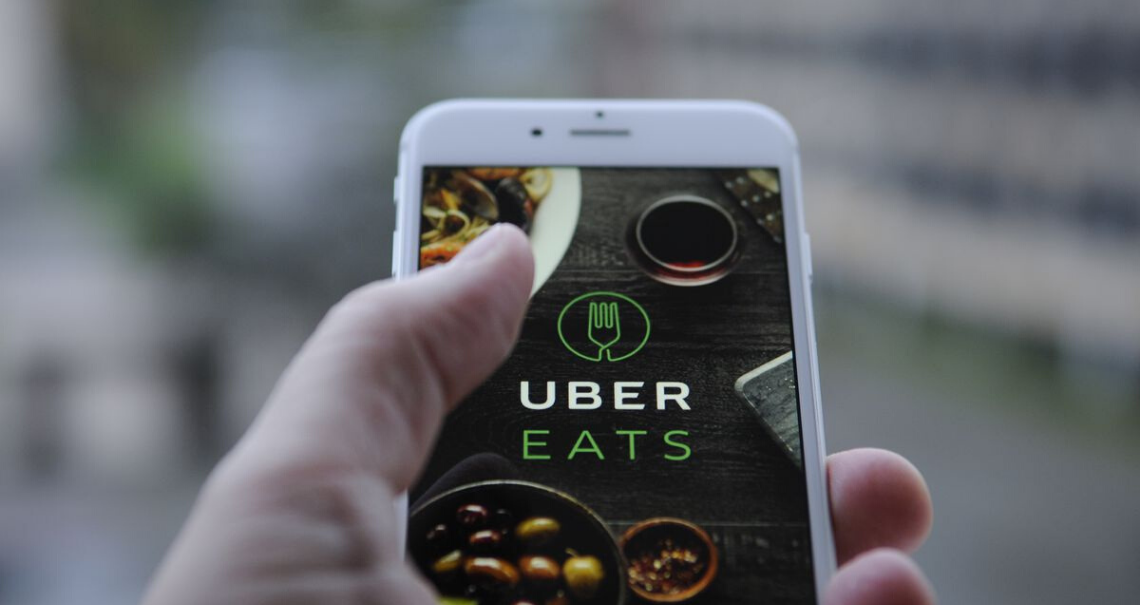Consumer demand for online food delivery is growing rapidly, with chef quality food now able to be ordered and enjoyed at home.
The emergence of online food delivery in Australia is expanding not only our selection of food but also how often we eat out. A recent report by Morgan and Stanley forecasts a tremendous growth in this sector; with online food orders expected to rise from $1.5 billion in 2017 to $4.2 billion by 2025.
According to Gnocchi Gnocchi Brothers co-founder and owner Ben Cleary-Corradini the growth of online food delivery services has helped grow his business.
“UberEATS constitutes roughly 50 per cent of our take away trade. The other 50 per cent of our take away trade is driven by walk-in customers or customers who have placed orders on our new online ordering system which we developed for our restaurant,” said Mr Cleary-Corrandini.
“The increase in business UberEATS has brought us has challenged us to rethink our kitchen operations. We took the step of re-modelling our work flow to clearly distinguish our kitchen into two sections; dine in service and take away service. This clear structure within our kitchen allows us to service both the dine in section and the take away section with focus and speed while not interfering with each other, nor limiting the quality of service in both areas.”
Gnocchi Gnocchi Brothers are not alone in redesigning their space to accommodate delivery services. Another stellar example of this is the Made Establishment Group, headed by George Calombaris, which includes popular Melbourne restaurants, Hellenic Republic, Jimmy Grants and Gazi. This group has been adapting the design of their restaurants to enhance food delivery services. As highlighted by chief executive Troy McDonagh last year, “We’ve adjusted the pass, where the food comes out of the kitchen, and also front of house we are making design changes to allow for delivery partners”.
These technologies enable customers to access restaurant and café food at times when they wouldn’t typically go out to eat. Deliveroo Australia Country Manager Levi Aron told SmartCompany earlier this year; “We’re able to increase restaurants revenues into times when they’re traditionally not busy. Typically, Sunday night is quiet, so we’re increasing volume orders for them at times like that”.
Growing customer engagement on these platforms allows restaurants to reach a wider audience than that enabled by traditional channels, effectively growing brand awareness and increasing potential revenue streams.
So, why is it that while some businesses are thriving off the opportunities offered by these technologies, others are refusing adopt it?
One of the associated trade-offs with being part of these platforms is that they require businesses to sacrifice a portion of their profit. These services typically charge a 30 per cent commission on the total order value. Food and beverage providers traditionally have small profit margins, so 30 per cent can be too big a portion for many.
According to Mr Cleary-Corradini the normal net profit for most restaurants in Australia is a mere 3 per cent so traditional restaurants would simply not be able to make a profit with most food service delivery models given the significant percentage cut they charge the restaurant per transaction.
“Saying this, a business model like Gnocchi Gnocchi Brothers which is a hybrid restaurant/take away operation has a lower cost business model allowing us to be the right candidate for this type of service. While a sale within our dine in section or even our ‘walk in’ take away is more profitable for us than an UberEATS sale, the sheer volume of UberEATS sales we accumulate through each service makes it a worthwhile market segment for us,” said Mr Cleary-Corradini.
The highly competitive nature of the food industry means that controlling costs is essential to being able to run a profitable business. Business owners are looking for ways to maximise the efficiency of their business, as reflected by the rise of simple staffing structures.
One such solution is the introduction of ‘dark kitchens’, which is whereby restaurants open separate venues specifically for takeaway. This solution aims to capitalise on the growing demand for online ordering and delivery and cater for neighbourhood catchments that aren’t currently being serviced. ‘Dark kitchens’ offer food premises the ability to expand their existing businesses without opening up expensive premises.
According to Mr Cleary-Corradini however ‘dark kitchens’ have a downside. “Our opinion on this is mixed. Some restaurants are using this as a ‘front’ to hide behind putting out food which they may not specialise in or be necessarily great at. As the ‘dark kitchen’ is relatively unknown, in some ways it could be that it cuts away at the authenticity and quality of the food as these operators may just be after making quick, easy bucks (with lower overheads) as opposed to offering food that has been made with passion. Knowing the kitchen your food comes from provides transparency into the care factor of the meal you will receive,” said Mr Cleary-Corradini.
If cafés and restaurants don’t believe their bottom line can support the commission structures associated with online delivery platforms, there are alternative options that can help improve the customer experience. There are a variety of apps that provide an answer to customer demands for service in the palm of their hands without a severe cut to profit margins, such as Boppl, Skip and Hey You, that allow customers the ability to order and pay for food on their phone, skip long wait times and earn redeemable points.
Overall, the food industry is seeing significant change. In this constantly changing landscape, food venues need to be innovative by investigating the ways in which they can leverage technology to promote a greater customer experience and foster customer loyalty. Each business is different and needs to play to their strengths.




